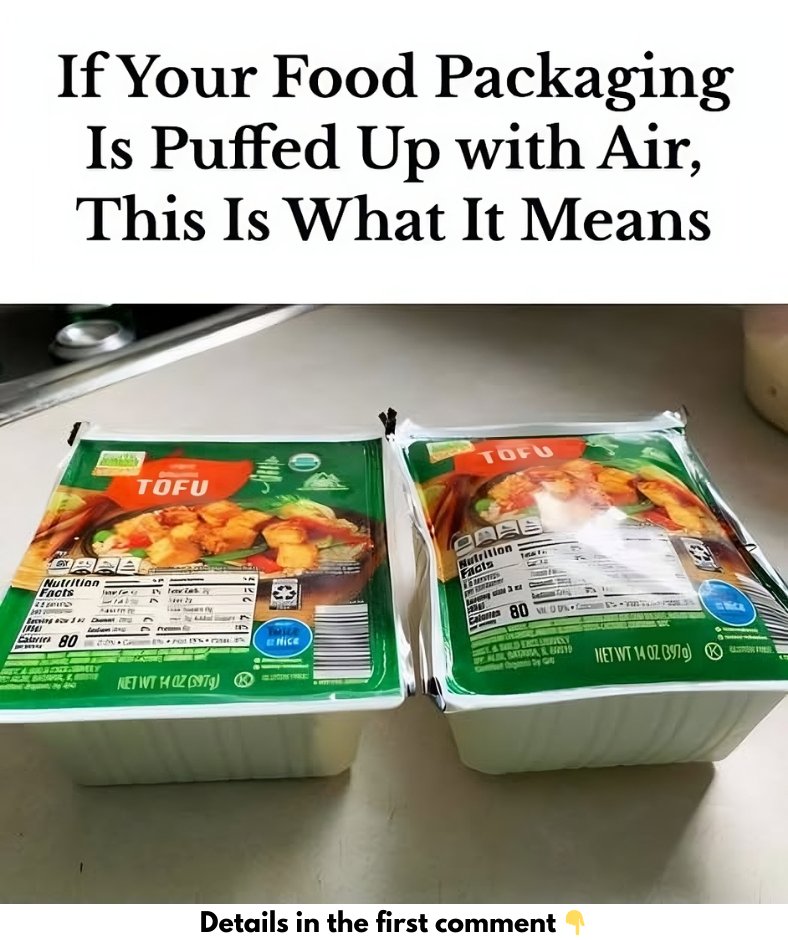Have you ever picked up a food item at the store and noticed its packaging puffed up like a balloon? While it might seem harmless or simply odd at first, swollen or bloated food packaging can sometimes be a warning sign of potential food safety issues. Understanding what causes this phenomenon and how to handle it is crucial for protecting your health. In this article, we’ll explore the reasons behind bloated packaging, whether it’s safe to consume the food inside, and what steps you can take to ensure your safety.

What Causes Food Packaging to Swell?
Food packaging often contains a small amount of air, which is normal and intentional. For instance, bags of chips have extra air to cushion the contents and prevent them from breaking. However, when packaging becomes excessively swollen, it may signal a problem. The bloating you see is often caused by gases released from microorganisms growing inside the package.
According to Professor Wei Zhang, a food safety expert, certain microorganisms, such as bacteria, can multiply inside food packaging, particularly in perishable foods. As these bacteria grow, they release gases like carbon dioxide, causing the packaging to swell. This is a classic sign of spoilage and may indicate the presence of harmful bacteria, which can pose serious health risks.
When Bloating Indicates Spoilage: A Red Flag
While slight puffiness in food packaging is common and usually safe, excessive swelling is often a red flag. Meredith Carothers, a food safety specialist at the USDA, warns that bloated packaging in perishable items like meat, poultry, and seafood is frequently a sign of spoilage. Harmful bacteria can grow in these foods and release gases that inflate the packaging. In many cases, the food inside is no longer safe to consume, even if it doesn’t look or smell spoiled.
@meatdad @neilbeckman this definitely could be gas is being released! Don’t purchase any products with bloated packaging. Store your food properly at intended conditions! Some companies do supplement carbon dioxide or nitrogen, to increase the shelflife #meatdad #howmeatdadeattok#butchertiktok #meatlovers #meattalk #tipsandtricks ♬ Inspiring Emotional Piano – Metrow Ar
The presence of harmful microorganisms in bloated packages can lead to foodborne illnesses, making it crucial to avoid eating such items. This is especially important for high-risk foods like raw meats, which are more prone to bacterial contamination due to their high moisture content.
Not All Bloating is Dangerous
Interestingly, not all bloated packaging indicates a problem. Some foods use a method called Modified Atmosphere Packaging (MAP) to extend shelf life. This technique involves injecting gases like nitrogen or carbon dioxide into the package to preserve freshness. Foods such as meats, cheeses, and salad mixes are often packaged this way, and slight swelling is expected.
Carothers explains that MAP is a safe and widely approved method of food preservation. The presence of extra gas in these packages is intentional and doesn’t indicate spoilage. However, if a product that wasn’t packaged using MAP appears swollen, it’s important to exercise caution.
Which Foods Are Most Prone to Bloating?
Certain foods are more susceptible to bloating due to microbial activity. Items with high moisture content, such as raw meat, poultry, seafood, and dairy products, provide an ideal environment for bacteria to thrive. As these microorganisms feed on the food, they produce gases that cause the packaging to puff up.
On the other hand, dry foods like crackers, peanut butter, and dried fruits are less likely to experience bloating because they don’t provide the same conditions for bacterial growth. In these cases, bloated packaging is typically caused by storage issues or manufacturing defects rather than spoilage.
How to Handle Bloated Food Packaging Safely
If you encounter swollen food packaging, it’s essential to exercise caution. Even if the item is still within its expiration date, bloating can indicate spoilage or improper storage. Here’s how to handle bloated packaging:
- Check the Expiration Date: If the product is past its expiration or “use-by” date, discard it immediately. Even if it seems fine, the risk of bacterial contamination isn’t worth taking.
- Trust Your Senses: While smell isn’t always a reliable indicator of spoilage, it can sometimes provide clues. If the food smells sour, rancid, or off, it’s likely spoiled. However, some bacteria don’t produce noticeable odors, so don’t rely on smell alone.
- Consider the Food Type: Perishable items like raw meat and seafood are more likely to pose a risk when their packaging is bloated. In contrast, non-perishable foods like canned goods may bloat due to chemical reactions, but they still require careful inspection.
- Store Food Properly: Always follow the storage instructions provided on the label. Keep perishable items refrigerated and away from heat sources to minimize bacterial growth and prevent packaging from swelling unnecessarily.
Why the Smell Test Isn’t Foolproof
While it may be tempting to rely on your nose to assess whether food is safe to eat, this method isn’t always effective. Some spoilage bacteria don’t produce odors, even when they’ve made the food unsafe to consume. Carothers points out that a lack of bad smell doesn’t necessarily mean the food is safe, making it even more important to pay attention to other signs like bloating or discoloration.
The Bottom Line: When in Doubt, Throw It Out
If you come across a swollen food package, err on the side of caution. Check the expiration date, inspect the packaging for signs of spoilage, and trust your instincts. If the product seems questionable or you’re unsure of its safety, it’s best to discard it. As Carothers wisely advises, “It’s not worth risking your health over a suspicious package.”
In conclusion, while not all bloated packaging indicates a problem, excessive swelling is often a sign of spoilage or bacterial contamination. By staying vigilant and following proper food safety practices, you can protect yourself and your family from potential health risks. Always prioritize safety when handling bloated food packaging—your well-being is worth it.





